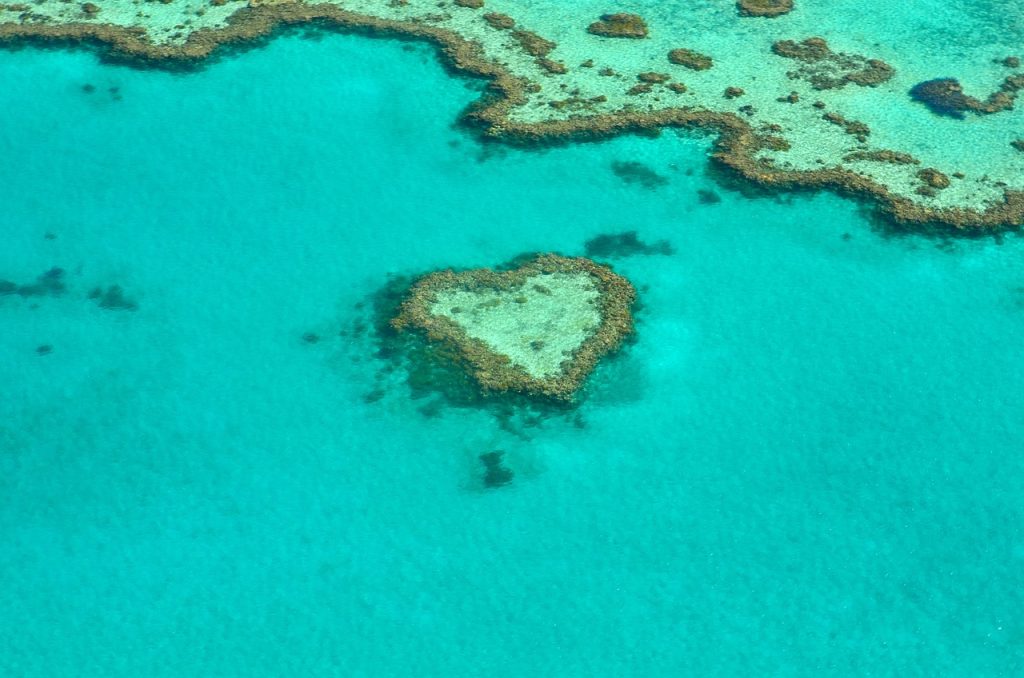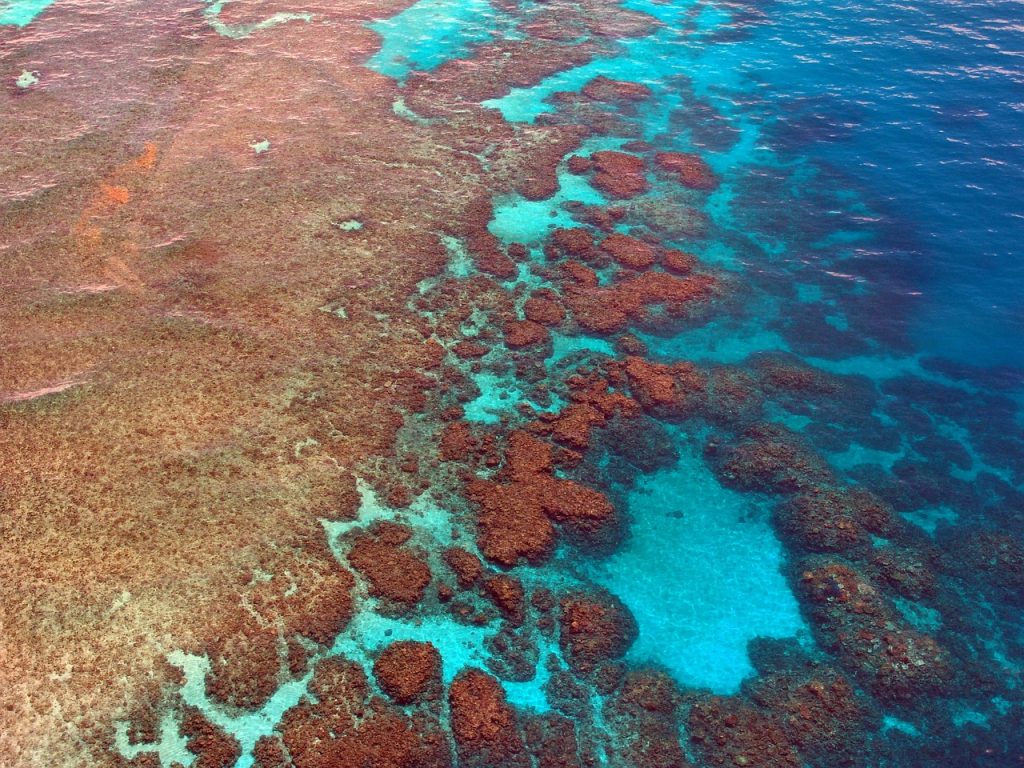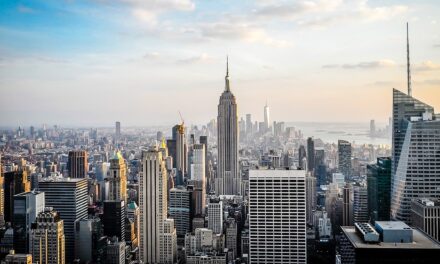The Great Barrier Reef, a colossal marine ecosystem stretching across 2,300 kilometres, graces the northeastern coastline of Australia. This enchanting spectacle of nature, so grand that it is visible even from the cosmos, represents a mesmerising tableau of our planet’s vibrant biodiversity. The reef isn’t merely an underwater display of coral and aquatic life; it’s a living, breathing entity contributing substantially to the Earth’s health and the livelihood of millions.
The reef, which is home to an incredible diversity of marine life, serves as a haven for innumerable species, including colourful corals, a wide range of fish and molluscs, and even endangered species such as the green turtle and dugong. The Great Barrier Reef is more than simply a visual treat; it is an ecological pillar that plays an important role in climate control, coastal protection, and other ecosystem services.

Despite its enormous ecological and economic worth, the reef is on the verge of collapse as a result of climate change, pollution, and human activity. The interaction of these harmful forces has raised concerns throughout the globe, with scientists and environmentalists banding together to defend and preserve this rare natural wonder.
So, what makes the Great Barrier Reef such an awe-inspiring sight and such an important asset to the health of the planet? What are the problems that this unrivalled undersea environment faces, and how can we, as responsible citizens of this planet, help to preserve it? In this post, we’ll delve into these topics in order to better understand and appreciate the Great Barrier Reef.

The Ecological Marvel that is the Great Barrier Reef
The Great Barrier Reef isn’t just a marine ecosystem; it’s an evolving, complex web of life, bustling with energy and diversity. A natural wonder that has grown and adapted over millennia, the reef’s ecological richness and complexity are virtually unparalleled on our planet.
The Biological Treasure Trove
The Reef is an ecological paradise teeming with life. It is home to an astonishing array of species. Over 1,500 species of fish, 400 types of coral, 4,000 species of molluscs, 240 species of birds, and an array of sponges, anemones, and other marine animals call the Reef their home. The reef’s exceptional biodiversity makes it a vital nursery and breeding ground for many marine species, playing a crucial role in the life cycles of several creatures.
The Coral Cities
Coral reefs are sometimes compared to underwater metropolises or “sea rainforests,” and with good reason. They are built by billions of coral polyps, which are small, colonial animals that work together to form the intricate, gorgeous structures we call corals. These thriving coral cities offer food, housing, and breeding sites for a plethora of marine species, making them the pulsing, energetic heart of the reef ecosystem. With its plethora of corals, the Great Barrier Reef serves as an undersea beacon of life and variety.
The Role of the Great Barrier Reef in Climate Regulation
The Great Barrier Reef, like other marine ecosystems, plays a critical role in global climate regulation. Its contributions to climate stability and carbon sequestration are often underestimated.
The Carbon Sink
Marine plants, algae, and corals in the Great Barrier Reef contribute significantly to the world’s carbon sequestration efforts. These organisms absorb carbon dioxide, a greenhouse gas, from the atmosphere for photosynthesis. This process effectively transforms the Reef into a vast carbon sink, helping to mitigate the impacts of climate change.
However, this delicate balance is being disturbed by rising ocean temperatures and increased acidity caused by climate change. These changes threaten the health of the Reef, potentially impacting its capacity to sequester carbon.
The Impact on Weather Patterns
Reefs also influence local and global weather patterns through a process called ‘ocean mixing’. This phenomenon occurs when surface water is driven downwards, mixing with deeper, nutrient-rich waters. The Reef’s physical structure facilitates this process, helping to distribute heat around the globe and influence weather patterns. Unfortunately, if the Reef continues to deteriorate due to climate change, this vital process could be disrupted, leading to more unpredictable weather patterns and exacerbating global climate change.
The Economic Value of the Great Barrier Reef
Beyond its ecological significance, the Great Barrier Reef also holds immense economic value. As one of the world’s most sought-after tourist destinations, the Reef plays a substantial role in supporting the local and national economy of Australia.
The Booming Tourism Industry
The Great Barrier Reef, recognised as a UNESCO World Heritage Site, attracts over two million visitors annually. Tourists flock from around the world to marvel at the Reef’s stunning beauty, explore its rich biodiversity, and partake in activities like snorkelling, diving, and boat tours. According to a Deloitte Access Economics report, the Reef contributes over AUD $6.4 billion to the Australian economy each year and supports more than 64,000 jobs, mainly in the tourism sector.
The Fisheries and Scientific Research
The Reef is not just a tourist hotspot but also a valuable source of income for local fisheries. The rich diversity of fish and other marine life in the Reef supports a robust fishing industry, contributing around AUD $1 billion annually to the Australian economy. Additionally, the Reef offers boundless opportunities for scientific research. Scientists across the globe study the Reef’s biodiversity, coral health, climate change impacts, and more, driving innovation and contributing to global knowledge in marine science.
The Threats Facing the Great Barrier Reef
The Great Barrier Reef, despite its vastness and resilience, is facing an onslaught of threats. From climate change and pollution to harmful fishing practices, the factors endangering this crucial ecosystem are numerous and multifaceted.
Climate Change: A Major Culprit
Climate change poses the most significant threat to the Great Barrier Reef. As greenhouse gas emissions continue to rise, the world’s oceans are becoming warmer and more acidic. Increased water temperatures lead to a phenomenon known as coral bleaching, in which corals expel the symbiotic algae living within their tissues, causing them to turn white. Without these algae, corals struggle to grow and reproduce, making them more susceptible to disease and death. Acidification also affects the ability of corals and other marine creatures to build their calcium carbonate shells and skeletons, threatening the overall health of the reef ecosystem.
Pollution and Overfishing: The Silent Killers
Besides climate change, other human activities are also impacting the health of the Great Barrier Reef. Pollution, particularly from land-based sources, is a major concern. Runoff from agriculture can carry harmful nutrients and pesticides into the reef, promoting the growth of algae blooms that smother corals and reduce water quality. Plastic waste also poses a significant threat, injuring or killing marine life that mistake it for food.
Overfishing is another key issue. Removing too many fish disrupts the delicate balance of the reef’s ecosystem, affecting its biodiversity and resilience. Illegal fishing and the use of harmful fishing practices also contribute to the reef’s degradation.
The Threats Facing the Great Barrier Reef
The Great Barrier Reef, despite its vastness and resilience, is facing an onslaught of threats. From climate change and pollution to harmful fishing practices, the factors endangering this crucial ecosystem are numerous and multifaceted.
Climate Change: A Major Culprit
Climate change poses the most significant threat to the Great Barrier Reef. As greenhouse gas emissions continue to rise, the world’s oceans are becoming warmer and more acidic. Increased water temperatures lead to a phenomenon known as coral bleaching, in which corals expel the symbiotic algae living within their tissues, causing them to turn white. Without these algae, corals struggle to grow and reproduce, making them more susceptible to disease and death. Acidification also affects the ability of corals and other marine creatures to build their calcium carbonate shells and skeletons, threatening the overall health of the reef ecosystem.
Pollution and Overfishing: The Silent Killers
Besides climate change, other human activities are also impacting the health of the Great Barrier Reef. Pollution, particularly from land-based sources, is a major concern. Runoff from agriculture can carry harmful nutrients and pesticides into the reef, promoting the growth of algae blooms that smother corals and reduce water quality. Plastic waste also poses a significant threat, injuring or killing marine life that mistake it for food.
Overfishing is another key issue. Removing too many fish disrupts the delicate balance of the reef’s ecosystem, affecting its biodiversity and resilience. Illegal fishing and the use of harmful fishing practices also contribute to the reef’s degradation.
Conserving the Great Barrier Reef: It’s Now or Never
The Great Barrier Reef is at a critical juncture, requiring urgent action to ensure its survival. Fortunately, various conservation efforts are underway, focusing on mitigating the impacts of climate change, reducing pollution, and promoting sustainable fishing practices.
International and Local Initiatives
On a global scale, the Paris Agreement, which aims to limit global warming to well below 2 degrees Celsius, represents a significant step towards protecting the Great Barrier Reef. By reducing greenhouse gas emissions, we can mitigate the impacts of climate change on the Reef.
Locally, the Australian government has implemented the Reef 2050 Long-Term Sustainability Plan, a comprehensive framework for protecting and managing the Great Barrier Reef until 2050. The plan includes measures to improve water quality, protect marine life, and enhance the Reef’s resilience to climate change.
Every Little Bit Helps
Individual actions also matter. Each of us can contribute to the conservation of the Great Barrier Reef in many ways. By reducing our carbon footprint, we can help fight climate change. We can also minimise the use of single-use plastics to prevent plastic pollution and support sustainable seafood choices to discourage overfishing.
Furthermore, raising awareness about the plight of the Reef is crucial. We can educate others about the importance of the Reef and the threats it faces, and encourage them to support its conservation. By joining or donating to organisations that protect the Reef, we can contribute directly to their efforts.
Conclusion: The Future of the Great Barrier Reef
The future of the Great Barrier Reef hangs in the balance. The challenges it faces are indeed daunting, but the efforts being made to conserve this irreplaceable ecosystem provide a glimmer of hope. With coordinated international action, robust scientific research, and the active participation of individuals, we can help ensure that the Reef continues to thrive for generations to come.
The Great Barrier Reef is not just an underwater spectacle; it’s a crucial element of our global ecosystem, a significant contributor to Australia’s economy, and a vibrant hub of biodiversity. Conserving the Reef is not just about preserving a natural wonder—it’s about ensuring the health and prosperity of our planet and future generations.
As we move forward, we must recognise the intrinsic value of the Great Barrier Reef and the urgent need for its preservation. Each of us has a role to play in this endeavour. Whether it’s reducing our carbon emissions, supporting sustainable practices, or spreading awareness about the Reef, every action counts.
The story of the Great Barrier Reef is not yet over. With combined efforts and sustained commitment, we can write the next chapters of this tale—one of resilience, recovery, and enduring beauty. It’s a shared responsibility and a shared opportunity to safeguard one of the world’s most incredible natural treasures. Together, we can make a difference.
Frequently Asked Questions
1. Where is the Great Barrier Reef located?
The Great Barrier Reef is located in the Coral Sea, off the coast of Queensland, Australia.
2. Why is the Great Barrier Reef important?
The Great Barrier Reef is important for many reasons. Ecologically, it’s home to a vast array of marine species and helps regulate global climate. Economically, it supports industries like tourism and fishing, contributing billions to Australia’s economy.
3. What threats is the Great Barrier Reef facing?
The Reef is facing several threats, including climate change, which leads to coral bleaching and ocean acidification. Pollution, especially from agricultural runoff and plastic waste, also poses a significant threat. Overfishing disrupts the balance of marine life in the reef ecosystem.
4. What is being done to protect the Great Barrier Reef?
Several local and international initiatives aim to protect the Reef. These include the Paris Agreement to limit global warming and Australia’s Reef 2050 Plan. Individuals can also contribute by reducing carbon emissions, supporting sustainable practices, and raising awareness about the Reef.
5. How can I help protect the Great Barrier Reef?
Every action counts. Reducing your carbon footprint, minimising the use of plastic, supporting sustainable seafood choices, and spreading awareness about the Reef’s importance and threats are all ways you can help.
This article, which was created using the latest information and reliable sources, was reviewed and edited for grammatical accuracy and clarity using Grammarly. For any comments, queries, or updates about the content, feel free to reach out to us. We aim to provide you with the most accurate, engaging, and valuable content.
Enjoyed this read? For more fascinating insights into the world around us, subscribe to our newsletter and stay tuned. Let’s continue to learn, appreciate, and conserve our planet, one article at a time.












Subscribe To Our Newsletter
Join our mailing list to receive the latest news and updates from our team.
You have Successfully Subscribed!